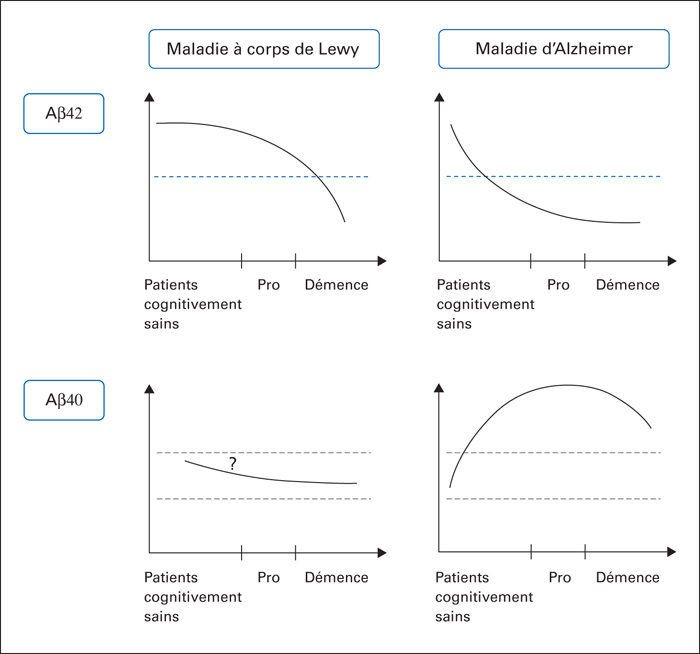Gériatrie et Psychologie Neuropsychiatrie du Vieillissement
MENUDiagnostic value of Alzheimer's biomarkers in cerebrospinal fluid in dementia with Lewy body Volume 16, issue 2, Juin 2018
Figures
- Key words: maladie à corps de Lewy, maladie d’Alzheimer, stade prodromal, liquide cérébrospinal, biomarqueurs, diagnostic différentiel
- DOI : 10.1684/pnv.2018.0731
- Page(s) : 174-80
- Published in: 2018
Dementia with Lewy body (DLB) is the second most common form of dementia after Alzheimer's disease (AD), accounting for 15% to 20% of neuropathologically defined cases. Two-thirds of the patients affected are not or misdiagnosed. In this review, we evaluate the discriminatory power of cerebrospinal fluid (CSF) biomarkers by focusing more specifically on differential diagnosis between DLB and AD. Thus, among the AD biomarkers (t-Tau, phospho-Tau181, Aβ42 and Aβ40) used routinely, t-Tau and phospho-Tau181 have shown excellent discrimination whatever the clinical stages severity. Aβ42 level is pathological in DLB patients at the demented stage, but is almost not impacted at the prodromal stage. Thus, globally the biological diagnosis on CSF basis makes it possible to separate the DLBs from the ADs.


